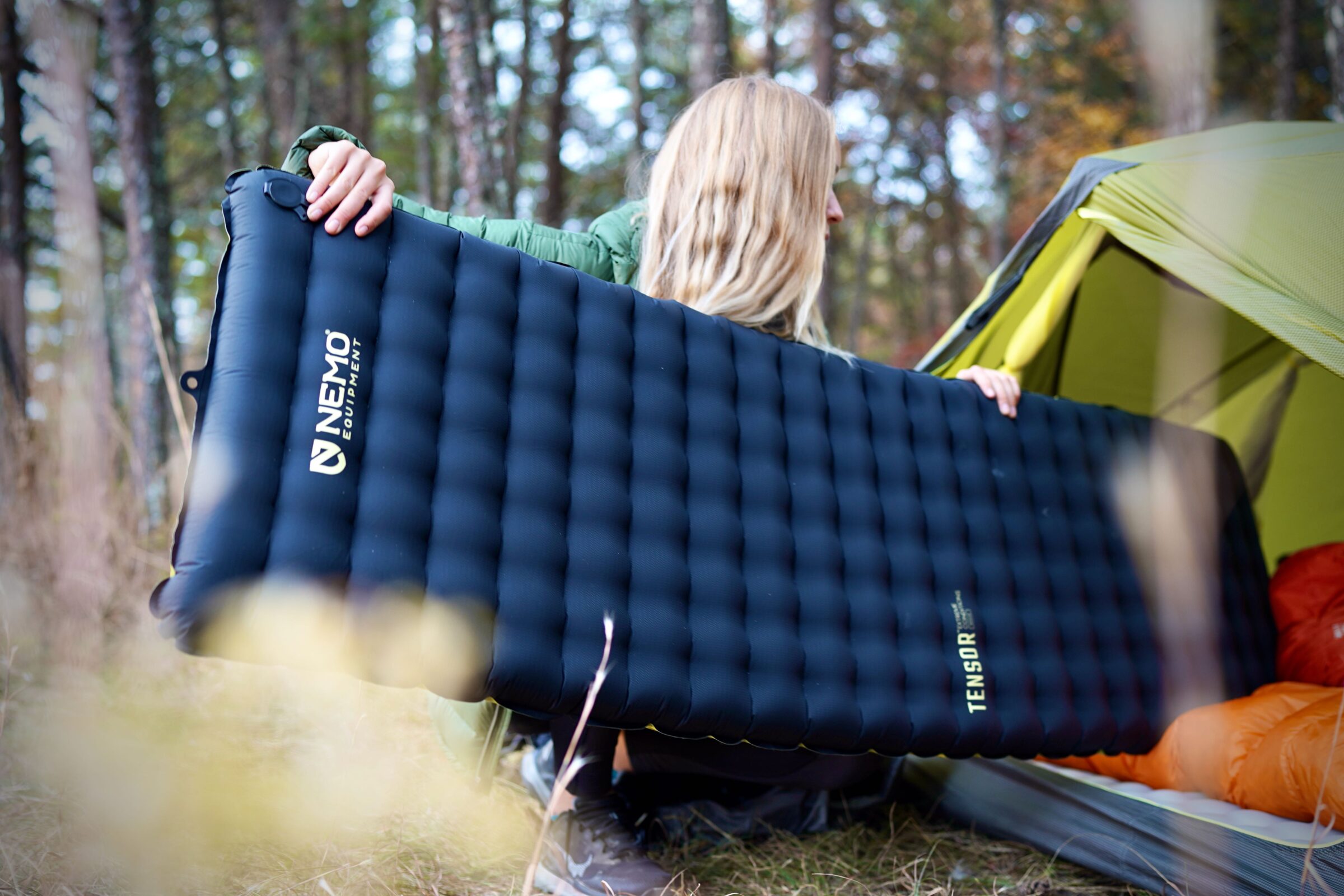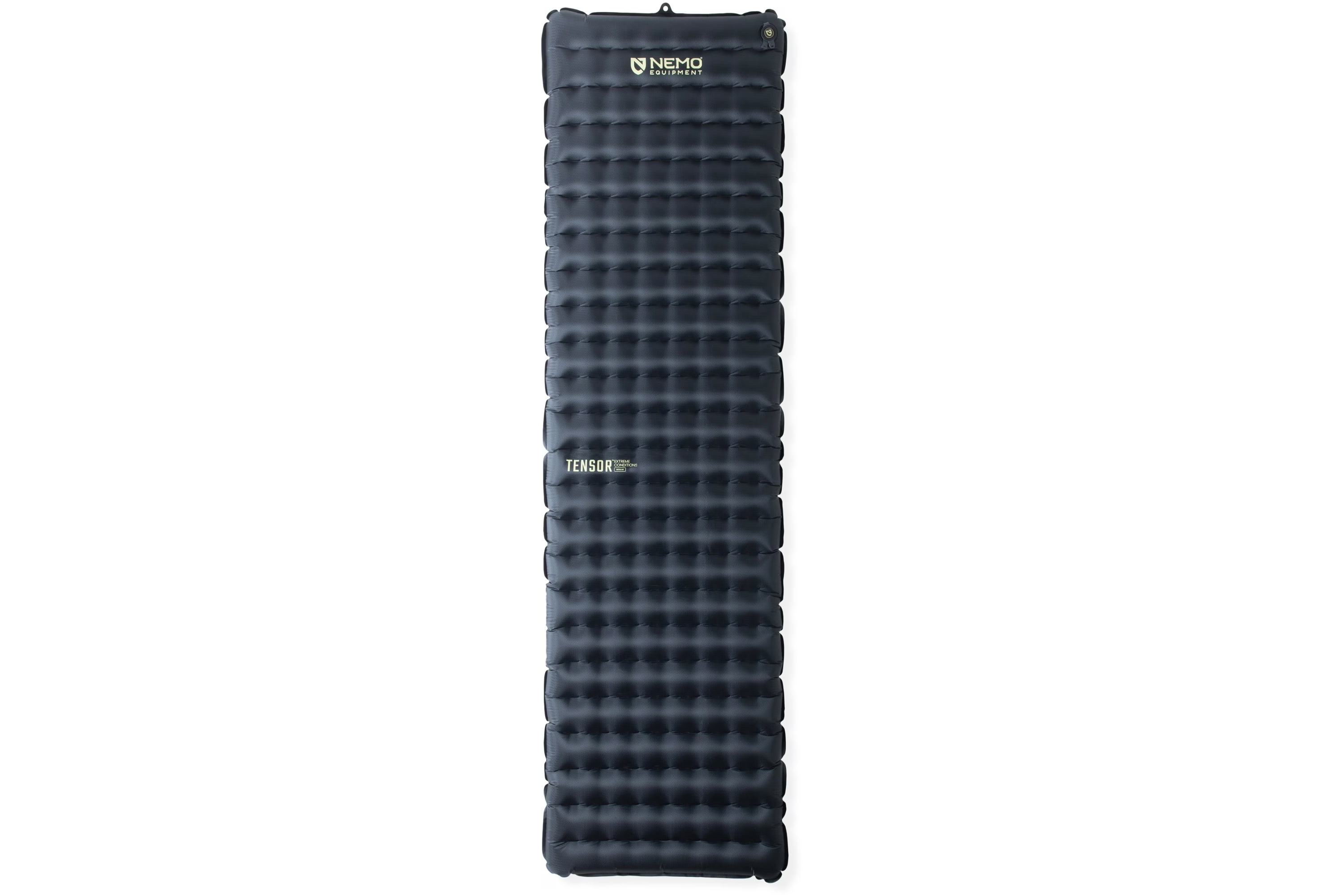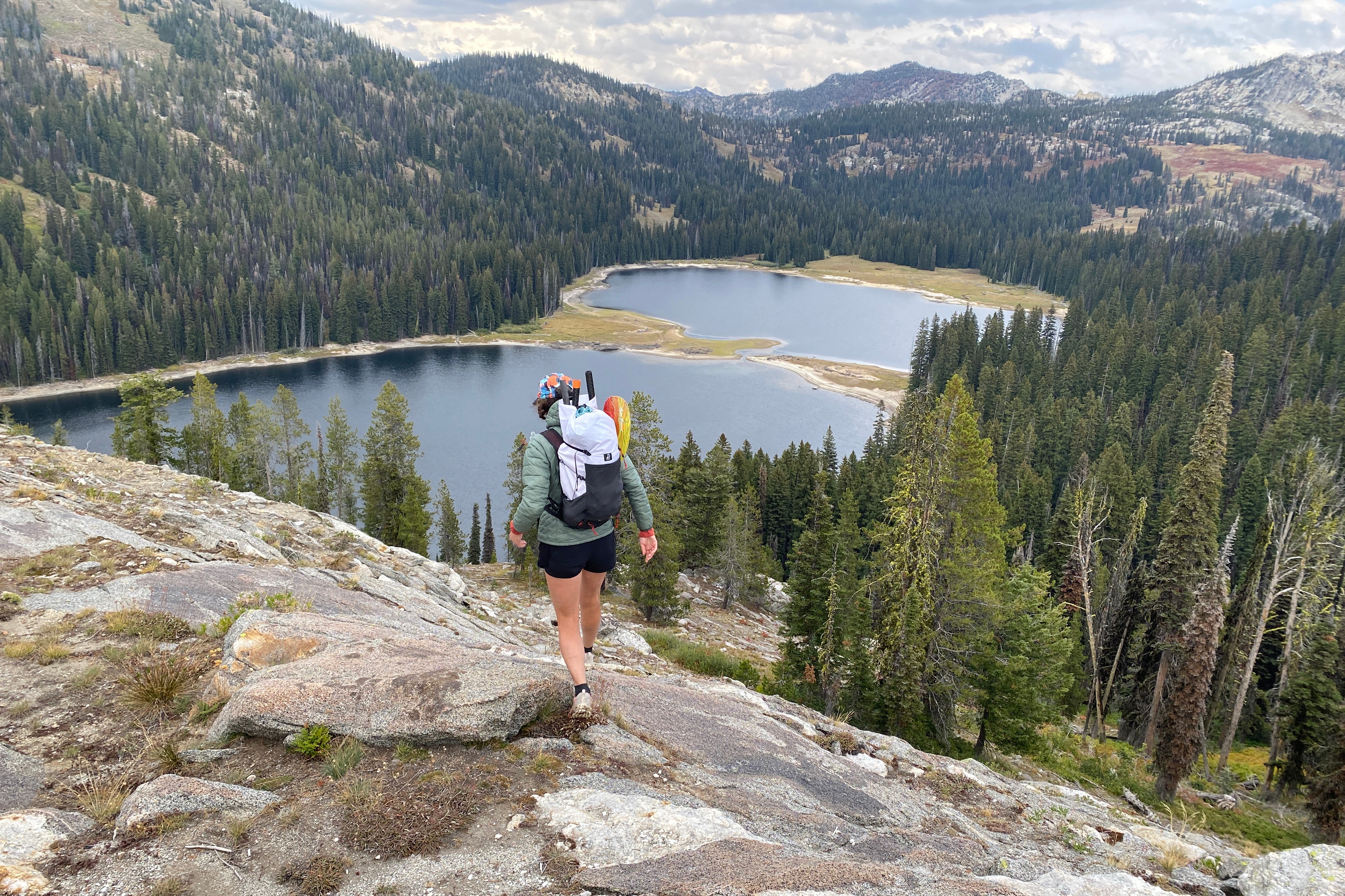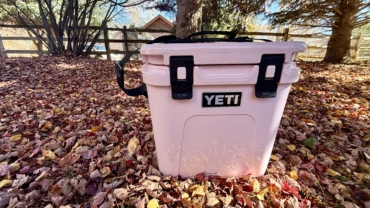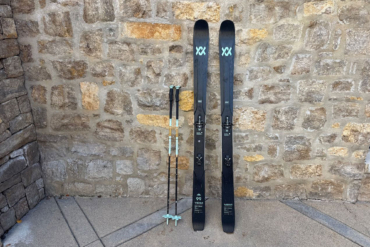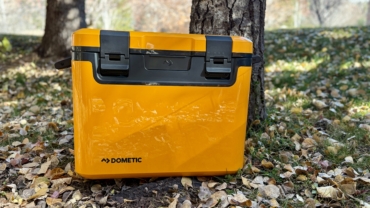Nothing gets a gram-weenie, toothbrush-choppin’, ultralight trail-trotter like me more jazzed than seeing claims like the ones above. It’s like reading about celebrity drama at the Met Gala — for dirtbags. Hell hath no fury like the warmth-to-weight debate among backpackers.
And it is perhaps most fierce when the topic of sleeping bags and pads arises. Those are, after all, two of the most important and space-consuming members of the “big four” family in your backpack.
In early May 2021, I was post-holing in hip-deep snow through the frozen San Juans on a desperate thru-hike of the CDT. While my Therm-a-Rest NeoAir XLite kept me cozy in most conditions, what I would have given for a pad with anywhere near an 8.5 R-value on those frigid snow-blasted nights in Colorado. But every option was simply too heavy for an ultralight loadout. So when the Tensor Extreme Conditions ($250) came out, I was beyond psyched to get my grubby paws on it.
Such high insulation isn’t necessary for most shoulder-season backpacking trips. But when a pad weighs less than top models on the market that can’t even boast half the R-value, it’s worth a look. Plus, spurts of high-altitude mileage through freezing temps may be required during the fall and spring, as I have discovered on each of my thru-hikes. And, for those stone-cold pros braving arctic temps on hunting excursions and winter thru-hikes, this may be the backcountry bed of your dreams.
NEMO’s newly launched Tensor Extreme Conditions (EC) Pad is already making ripples in the outdoor community. It’s completely toasting the competition and raked in a coveted international ISPO award. But does it deserve the red carpet? After putting this slim feat of engineering through frigid fall backpacking trips, overnight climbing trips in Appalachia, and even big wall ascents in Yosemite sleeping on portaledges, I agree — there’s nothing quite like it.
In short: While I have a few qualms that arose during testing, the Tensor Extreme Conditions undoubtedly sets a new bar in ultralight sleeping pad innovation. Building on the shoulders of NEMO’s established sleeping pad tech, Thermal Mirror Insulation, and new Apex baffles crank up the heat without packing on pounds. For uncompromising warmth at an ultralight weight on freezing forays in the backcountry, this is quite literally as good as it gets.
Looking for a new sleeping pad? Check out GearJunkie’s Best Backpacking Sleeping Pad Buyer’s Guide to see how the Tensor Extreme Conditions stacks up.
- Weight: 1 lb., 1 oz. (regular mummy)
- R-value: 8.5
- Thickness: 3.5"
- Lengths Available: Regular (72"), Long (76")
- Width: Regular (20"), Wide (25")
- Packed Size: 4" x 10" (regular mummy)
- Shell Fabric: 20D and 40D GRS-certified & Bluesign-approved nylon
- Insulation Type: Thermal Mirror aluminized foil
Pros
- Best warmth-to-weight ratio on the market
- Small pack size
- Durable construction despite light weight
- Quick inflation time
- Quiet
Cons
- Extremely difficult to fit into stuff sack
- Slippery material
- Not our favorite valve construction
NEMO Tensor Extreme Conditions Review

Let’s get down to brass tacks: this pad isn’t for everyone. NEMO broke some serious ground in developing the Tensor Extreme Conditions. But I wouldn’t recommend it to just any ultralighter hitting the trail. This is for the hiker, backpacker, hunter, mountaineer — you name it — who’s staring down the barrel of technical missions in frigid temps, and needs to keep that base weight as low as possible.
In creating such a lightweight monster insulator, Nemo did have to cut some corners — namely in the comfort and useability departments. Warmth and an ultralight profile are prioritized here.
That’s not to say you can’t snag some serious Zs atop this pad, though. Yes, it’s a bit narrow and falls on the slippery fringe of the spectrum. But it boasts a plush 3.5-inch height and isn’t near as “bouncy” as other models I’ve tested, greatly improving sleep.
Despite a minimum weight of 1 pound, 1 ounce, the Tensor EC boils with thermal efficiency. It cranks out an impressive R-value of 8.5. That’s the highest value on the market, with a weight that rivals top-shelf pads worth half the warmth. Apex baffles are key ingredients in the secret sauce.
Apex Baffle Construction: Hefty Insulation in a Tiny Package

The Tensor EC borrows some core elements from existing NEMO pads, like one-way lay-low valves, and suspended Thermal Mirror metalized film. However, it employs a new baffle tech called Apex. Four layers of its thermal film are placed over trapezoidal trusses (flexible, vertical supports within the pad), as opposed to the common rectangular design.
Each sheet of film is slotted over these trusses, with different-sized holes in each sheet. That eliminates the need to weld them in place. By free-floating each sheet, NEMO not only cuts weight but greatly reduces the loud crinkly sound that is so common — and insomnia-inducing — with insulating air pads.
Each layer reflects back body heat and guards against radiant heat loss, while deflecting cold from the ground. Though I wasn’t able to test this in the sub-zero temps it’s designed to handle, I approached the freezing point on a couple of trips and can confirm — this is one heck of a toasty pad. Never once was I uncomfortable or cold.
The low-stretch trusses within the pad reduce springiness and provide a surprising balance of support and give, despite the four suspended film layers beneath you. I had some fears — particularly as a side sleeper — that the “suspended” nature of the Thermal Mirror sheets would lead to an uneven feeling. But I was pleasantly surprised at how stable it felt, even while tossing and turning.
The 3.5-inch stack height makes this a dream for side-sleepers. It’s a half-inch bump from my flagship NeoAir XLite that usually accompanies me on backpacking excursions.

Tensor Extreme Condition’s Slim, Ultralight Silhouette
The Tensor EC‘s slim design and thin materials reduce weight, but I found myself sliding off on several occasions — no thanks to the comparatively slippery fabric. While a 20-inch width is in line with top lightweight pads (such as the NeoAir XLite NXT and UberLite), it feels narrow for a pad with such a high stack height and lofty R-value. If I’m going to be camping in sub-zero temps, I schlep along a chunky sub-zero sleeping bag. I’m often also wearing a thick winter coat, hat, gloves, etc.
All of this on a 20-inch pad feels a bit hindering. Pads with similar high R-values, like Exped’s Ultra 7R and Dura 8R allow you a tad more girth, affording a cozier, less constraining sleep.
Though it’s designed for ultralight winter missions in arctic conditions, I found its thin profile, high insulation, and generous cushion perfect for a niche outdoor purpose: sleeping on narrow ledges during chilly big wall ascents. While a jaunt up El Cap is a somewhat unconventional testing ground for a sleeping pad, it provided unique insight that other adventures may not have. It forced me to focus on specific elements more than others.
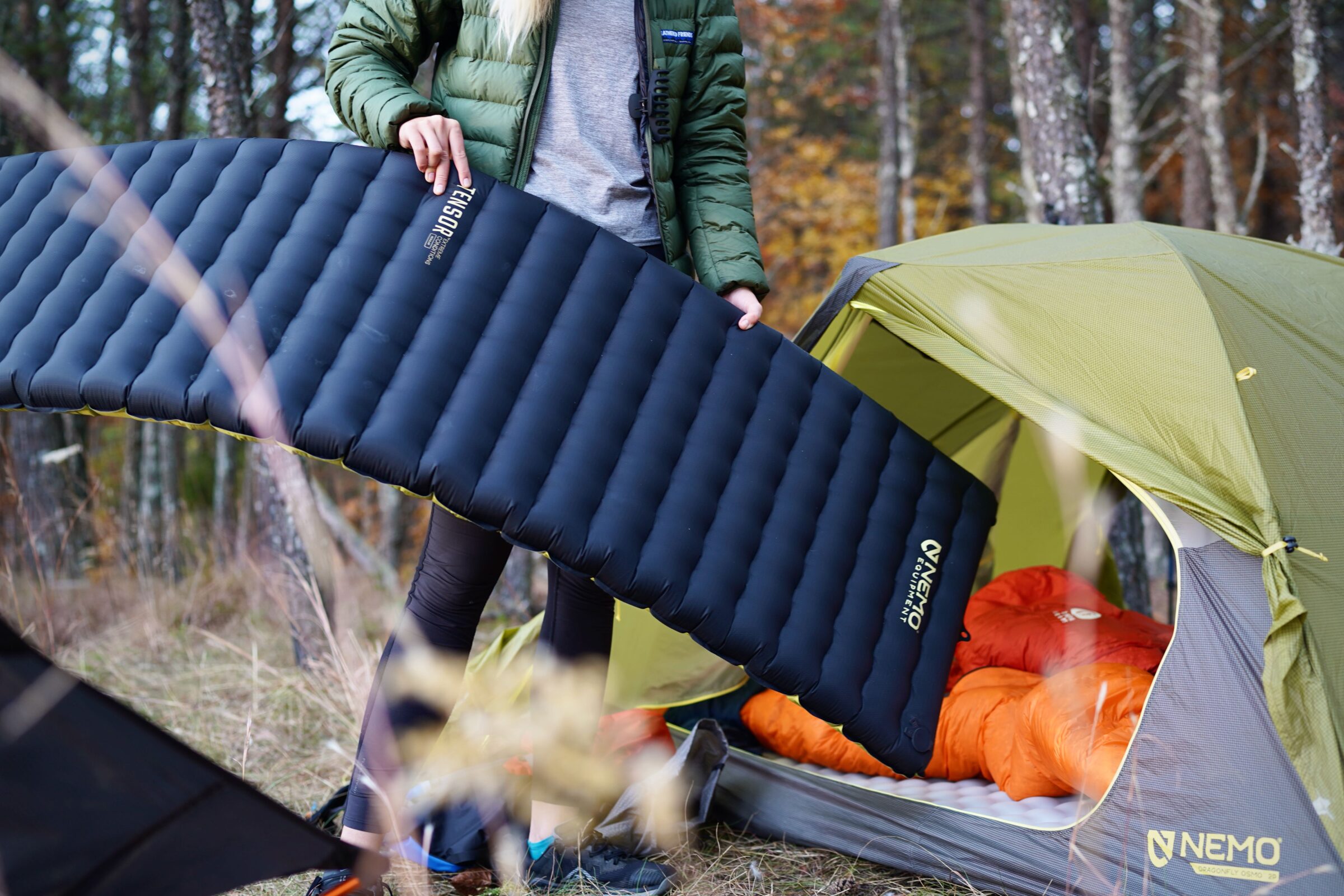
NEMO’s Tensor EC Goes Climbing
Near-freezing temps, whipping wind, teetering thousands of feet above a dark void — each fall night on El Cap is a test of endurance and squeamishness. My bed of choice for our 5-day foray was not picked flippantly. I needed a highly insulated pad with the lowest weight possible. It also needed to be slim enough to fit on small natural ledges and on our portaledge. The Tensor EC fit the bill just about perfectly.
If I was impressed at how well it kept me warm on solid ground, I was blown away by its ability to insulate me from cold seeping in from the granite face. It was like sleeping on a smushy space heater. Not only that, but the relatively narrow width allowed me to squeeze onto tiny ledges without the pad falling off

Additionally, its 40-denier nylon bottom resisted ripping against the sharp stone. Durability is always a fear of mine when testing ultralight pads. So this was a pleasant surprise. While sleeping on our portaledge, it deflected violent gusts of wind that endlessly whipped the bottom of the ledge, cocooning me in warmth.
A small hole at the top of the pad allowed me to clip it to a sling in case the pad slipped from under me and flew away in the breeze. This also serves as an easy way to hang the pad up to dry if it gets wet. That was a simple added bonus that I haven’t seen on other pads.
This is a unique example, but my climb allowed me to view and appreciate this pad from different angles. It proved the Tensor EC’s durability in harsher conditions than a generic camping trip.
I also brought it on a recent nippy fall backpacking romp along the Cumberland Trail in Tennessee. The colors were popping, and the sun was brilliant — but temps plummeted at night. It was hard to believe the mercury because of how warm I was. I even had to shed layers and open my sleeping bag to vent a bit. I quickly realized I wasn’t doing this pad justice. It yearns for far-flung expeditions on the very fringe of life-threatening conditions.
Mini Pack Size — With a Caveat

One of Tensor Extreme Conditions‘ selling points is how small it packs down, in correlation with its absurdly low weight. The pad rolls up fine, and does indeed cram down to just over the size of a Nalgene. But boy, do I have to practically blow a gasket to get it there. The included stuff sack is constricting, to say the least. Unless you roll it up with factory precision, it takes some serious gumption to stuff the pad inside.
That’s especially true if you want to stow the pump sack with it. Considering the EC was designed for use in freezing temps, this is the last battle I imagine you’d want to fight with numb, frozen fingers on crisp alpine starts.
I’m a fan of generous stuff sacks. I can always shove gear down smaller within my pack even if the sack has a baggy fit around it. I found the EC’s small pouch particularly frustrating while juggling cams, haul bags, and camping gear in the early mornings on El Cap, balancing precariously on our portaledge. On several occasions, I almost dropped the pad while wrestling it into the sack.
I’m being pretty cynical here. But if packed size is noted as a primary pro, it would be nice if it shrunk to the claimed size easily. That said, for the warmth this thing delivers, it is an impressively small package. Other pads in this bracket of insulation are much bulkier and heavier and may include some form of insulation to achieve such a high R-value.
So yes, this is objectively an extremely compressible model. I just wish it fit better in the storage pouch it provides.
Lay-Low Valve, High-Value Adjustment

Sleeping pad valves come in all shapes and sizes. While some are better than others, essentially every brand and model now features one-way valves with the option to quickly dump the air when it’s time to roll it up. NEMO’s Lay-Low valve follows suit. It makes inflation a breeze, and micro-adjustments even easier. Either use its included Vortex pump sack, or blow it up with your mouth to save weight. This thing inflates fast.
Remove the top cap to access the one-way valve, and pull the cap below out to swiftly deflate it. I’m generally not a fan of valves that sit on top of my pad, as they can rub against my head at night. But this one is about as flush with the fabric as it gets. I do find the valve location a bit annoying when rolling the pad up, however. With it on top of the pad, it’s difficult to get that last little bit of air out since you have to cover the valve on the last roll.
For a more cushioned feel, the valve makes it easy to release air even if the pad is fully weighted. Open the top cap and simply push the internal valve down slightly. Micro adjustments are easier to make than most pads I’ve played with.
Be careful, though. On a couple of occasions, I accidentally pulled the entire valve out of the pad while trying to make adjustments, deflating the thing entirely. It was my own fault, but be sure to rub the sleep out of your eyes and grab the correct tab if you wake in a daze at midnight.
Vortex Pump Sack — One of the Best Out There

I used to be a pump sack denier in an effort to cull as many ounces as possible. But after seeing how much moisture they keep out of your pad, and how much time you save during inflation, I’ve been toting them along more often than not.
The EC’s Vortex locks onto the pad securely, and it fills the pad in as little as two and a half pumps. Light-headed inflation sessions be gone!
This is by far one of the easiest-to-use pump sacks I’ve tested. It has a narrow opening to blow air into and inflates to max capacity with just a few puffs. Rolling it down is a cinch, and the sack stays firmly attached to the valve — an issue I’ve had with other pump sacks.
You can forego the pump sack to save space and weight. Just know: the “lay-lowness” aspect of the valve makes it somewhat difficult to inflate the entire thing by mouth. It’s definitely possible, but not nearly as easy as using the large side valves on pads like Therm-A-Rest’s NeoAirs.
Drawbacks of the Tensor Extreme Conditions

NEMO’s Tensor Extreme Conditions serves as a reminder that quality innovation is still possible this late in the outdoor game. It represents a new chapter in thermal efficiency, and is without a doubt one of the best pads on the market for ultralight missions in frigid conditions. And, in my opinion, $250 for this level of performance is competitive and downright affordable.
In light of that, it is admittedly difficult to ding. This pad genuinely blew me away by how comfortable, quiet, lightweight, and packable it is.
Our nitpicks with this pad are trivial considering what NEMO has accomplished, but it’s our job to note them. In short, its inability to easily roll up into its stuff sack is our biggest quibble. If you have a nice open surface it’s easier, but in a crowded backpacking tent — and particularly on a wobbly portaledge — it’s difficult to get all the air out and roll it as tight as it needs to be. Adding the pump sack to the mix makes this even harder.
Additionally, the face fabric is on the slippery side. I found myself sliding off a number of times during the night. Other pads of similar insulation and stack height feature grippier surfaces. Finally, I wish the Lay-Low valve was a tad easier to inflate by mouth.
What’s the Competition — If Any?
There aren’t many backpacking pads that stand up to the Tensor EC. Those that do tip the scales with heftier weights and pack sizes. Exped’s Ultra 7R (7 R-value; 1 pound, 6 ounces) and Dura 8R (8 R-value; 2 pounds, 1 ounce), Therm-a-Rest’s NeoAir XTherm NXT (7.3 R-value, 1 pound), and Sea to Summit’s Ether Light XT Extreme (6.2 R-value; 1 pound, 9.6 ounces) are perhaps the closest competition for lightweight backpacking.
None of these touch the warmth-to-weight ratio of the EC. Some use down or synthetic insulation to crank up the heat, packing on ounces and bulk. For next-level warmth at a mind-boggling weight, the EC is next to none.
NEMO Tensor Extreme Conditions Review: Who Is It For?

Do you need an 8.5 R-value pad for most of your backpacking adventures? Unless constant high-altitude alpine missions are your modus operandi, the answer is probably no. Is it nice to have such insulation for just-in-case freezes or stretches of chilly trails on longer journeys? Occasionally, yes — particularly when it weighs a scant 17 ounces.
Were I to do the CDT or PCT again, this is probably the pad I’d at least ship ahead of me for the snow-laden Sierra Nevada, Cascade, and San Juan ranges. It would have turned many a shiver bivy into a warm, full night of sleep.
The Tensor Extreme Conditions pad is for die-hard adventurers facing unmentionably cold conditions on ultralight objectives. At the cost of some usability and comfort, it keeps pack weight to a bare minimum while delivering the best warmth-to-weight ratio of any pad currently on the market. After countless cozy nights nestled above the Nemo Tensor EC, the other pads in my closet should be worried. This may have just become my favorite backcountry bed when the mercury drops.
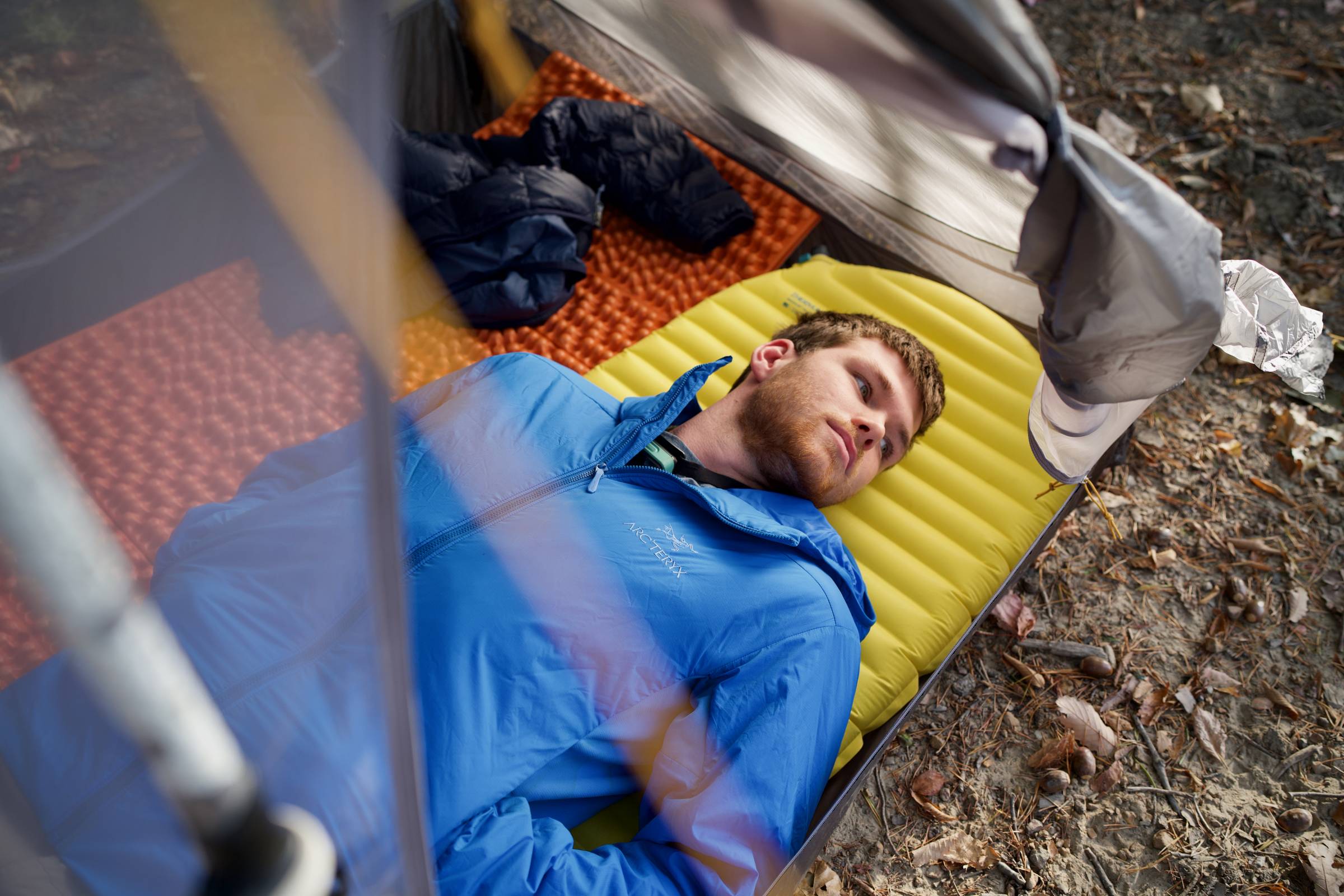
The Best Backpacking Sleeping Pads of 2025
We tested and reviewed the best sleeping pads for backpacking in 2025. Whether you need an ultralight mat or more insulation, we’ve got it.

The Best Camping Mattresses of 2025
From packable sleeping pads to ultracomfortable air beds, we tested and found the best camping mattresses and sleeping pads to fit every adventure and budget.
